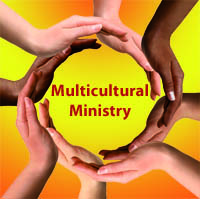Experiencing Multicultural Ministry: Part 1
 2×2’s sponsoring church, Redeemer Lutheran Church, has broad experience in multicultural ministry. As we start a new series of posts, we’d like to share our experience. We doubt it is typical or even if there is any typical methodology to multicultural ministry.
2×2’s sponsoring church, Redeemer Lutheran Church, has broad experience in multicultural ministry. As we start a new series of posts, we’d like to share our experience. We doubt it is typical or even if there is any typical methodology to multicultural ministry.
(We invite you to share your experiences. This is a fairly new emphasis within many church bodies. We can probably learn more from each other than from books!)
Multicultural Mission Outreach changed our church enormously for the better. It enriched our worship, our sense of mission, our fellowship, our stewardship, our spiritual life and our individual lives.
We did, however, encounter difficulties we never anticipated and which were severe.
We discovered that the greater church does not understand Multicultural Ministry. Its view seems to be “same old church/different people.” While leaders have identified this as a worthy goal (even a necessity), it does not appear to have a plan to achieve the goal or leadership with training to help implement it. In our experience, lay leadership was pivotal to laying the groundwork.
We encountered something very different, exciting and refreshing!
A Little About Redeemer
Redeemer is a small congregation in a well-established Philadelphia neighborhood. East Falls is home to rich and poor. Up until about a decade ago, it was flanked on either end by government high-rise housing projects. These have been destroyed. New single family subsidized housing has been built where they once stood. The presence of the “projects” in our neighborhood influenced attitudes toward different cultures for many years.
An outsider passing through would see tree-lined streets with well-kept homes. Some of them are sizable estates. Most are modest rowhouses. There are upscale apartments at opposite ends of town.
Redeemer sits at the economic and cultural crossroads of our community. Across the street is the public library and a K-8 public school. Down the hill is old factory worker housing. Behind Redeemer are middle class rowhomes. Above and across the street are the homes of many of Philadelphia’s movers and shakers, including a former U.S. Senator and Pennsylvania’s former governor.
East Falls is a university neighborhood. Philadelphia University, Drexel and Eastern Universities have campuses within our borders. Temple and LaSalle are also nearby. The local public school has struggled with academic achievement. Quaker and Catholic Schools are neighborhood options. Educational opportunities bring many newcomers to our town.
The buildings are of manageable size. A practical church layout, reflects the practical working class people who built it. In addition to a sanctuary/fellowship hall, our members built a seven-room educational building which proved to be an enormous asset to the congregation even after the loss of members following the turbulent 60s.
Redeemer was in a prime position to become a multicultural church, but it didn’t happen overnight.
A decade of poor leadership in the late 80s and 90s, left the congregation divided. We received little help from our regional body as they were having financial problems and any congregational problem was likely to be seen as opportunity to close a church for its assets. We struggled with our denomination for two years in the late 90s.
Eventually, our lay leaders identified a retired pastor who agreed to help. He came into a congregation that no longer trusted pastors. He spent three years with us, slowly restoring our congregation’s confidence with a weekly message of love. He invited many and a good number joined. He laid the groundwork for acceptance as our new members represented many parts of the world.
One family from Tanzania, began inviting their extended family and friends. Over a period of ten years, we developed a small East African community within our congregation.
In 2006, our congregation decided to concentrate our evangelism efforts on growing this segment of our congregation. We asked our part-time pastor to help us find leadership who could relate to Swahili-speaking East Africans. We talked about this for months. The regular report at council meetings: “There is no one.”
When this pastor resigned suddenly, our members within weeks identified two rostered Lutheran pastors from Tanzania. We started working with them.
Our members put every effort behind this outreach. We began by hosting a separate worship service entirely in Swahili. English-speaking members helped with music, putting together a worship bulletin, hosting fellowship and helping with child care. Leadership discussed that attendance at the English service might have to suffer while people, who normally supported it, helped with the Swahili Outreach.
Within a few months 49 members joined through this effort. At the suggestion of our Swahili-speaking members, we united our worship.
We were not prepared for the reaction of our regional body.
To be continued . . .
